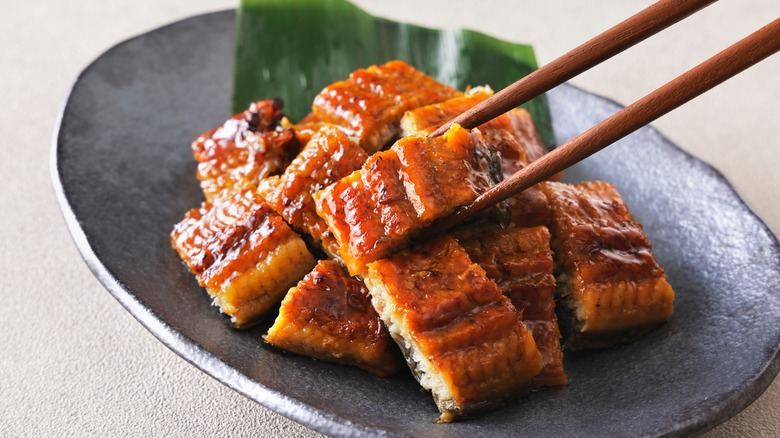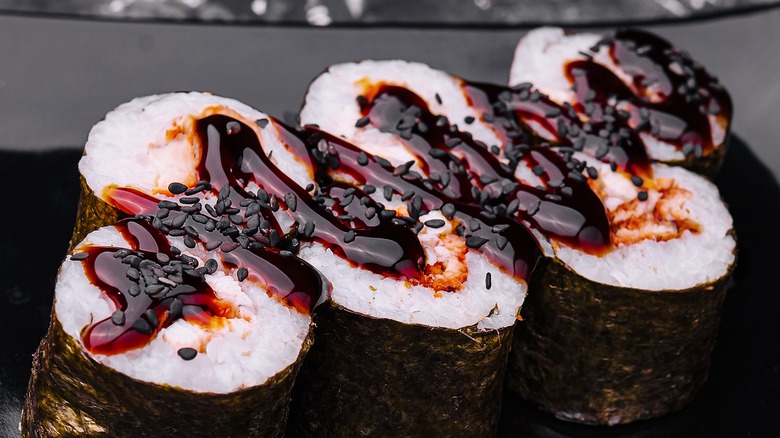No, Eel Sauce Doesn't Contain Actual Eel
We may receive a commission on purchases made from links.
Unlike fish sauce, which is made with oil-rich fish, eel sauce isn't standardly made from its namesake. Historically, it was made from a broth created from boiling eel bones, which is where its alternate name nitsume, meaning "boiling down," comes from. However, modern eel sauce is commonly made using dark soy sauce, mirin, sugar, and sake, giving it a huge punch of umami flavor with a slight sweetness and making it fish-free.
In Japan, you can typically find it on eel that is cooked kabayaki-style, meaning it is butterflied, skewered, and marinated before being served over rice as unadon, which means "eel rice bowl." For this reason, eel sauce is sometimes called kabayaki sauce. It is also known as unagi no tare, with unagi referring to eel and tare to sauce.
While the name of this sauce may initially put off some people who are unfamiliar with the culture surrounding eel consumption in Japan, eel sauce can be served with a wide variety of foods. For instance, it pairs exceptionally well with other fish, particularly mild varieties like halibut and cod that benefit from an extra punch of flavor, as well as meat and veggies.
How to use eel sauce to enhance your cooking
If you love cooking food with bold flavors, eel sauce is something you shouldn't shy away from, as it's an easy way to add a rich umami element to numerous dishes. While you can buy it premade, with Kikkoman selling a variety made with soy sauce, sugar, and vinegar, and Otafuku offering one made with soy sauce, sugar, sake, and ginger, you can also make it yourself. Homemade eel sauce is easy to prepare, as it involves simply combining its staple ingredients in a saucepan and reducing them to a thick consistency.
Whichever way you get your eel sauce, once you have it, it can be used in a ton of ways. Of course, the condiment is a sushi staple, so while there are some things you may not want to order at a sushi restaurant, like fried rice, unagi sauce is often worth dressing rolls with. Additionally, you can use it as a marinade to add more flavor to grilled chicken, pork, and tofu, or toss it in with some grilled veggies as a savory sauce. Eel sauce also makes a great topping for burgers and can be used on its own as a barbecue or dipping sauce. It can even serve as a replacement for hoisin sauce in a pinch. The best thing about eel sauce is its versatility, which makes it a must-have if you want to take your cooking to another level with new flavors.

